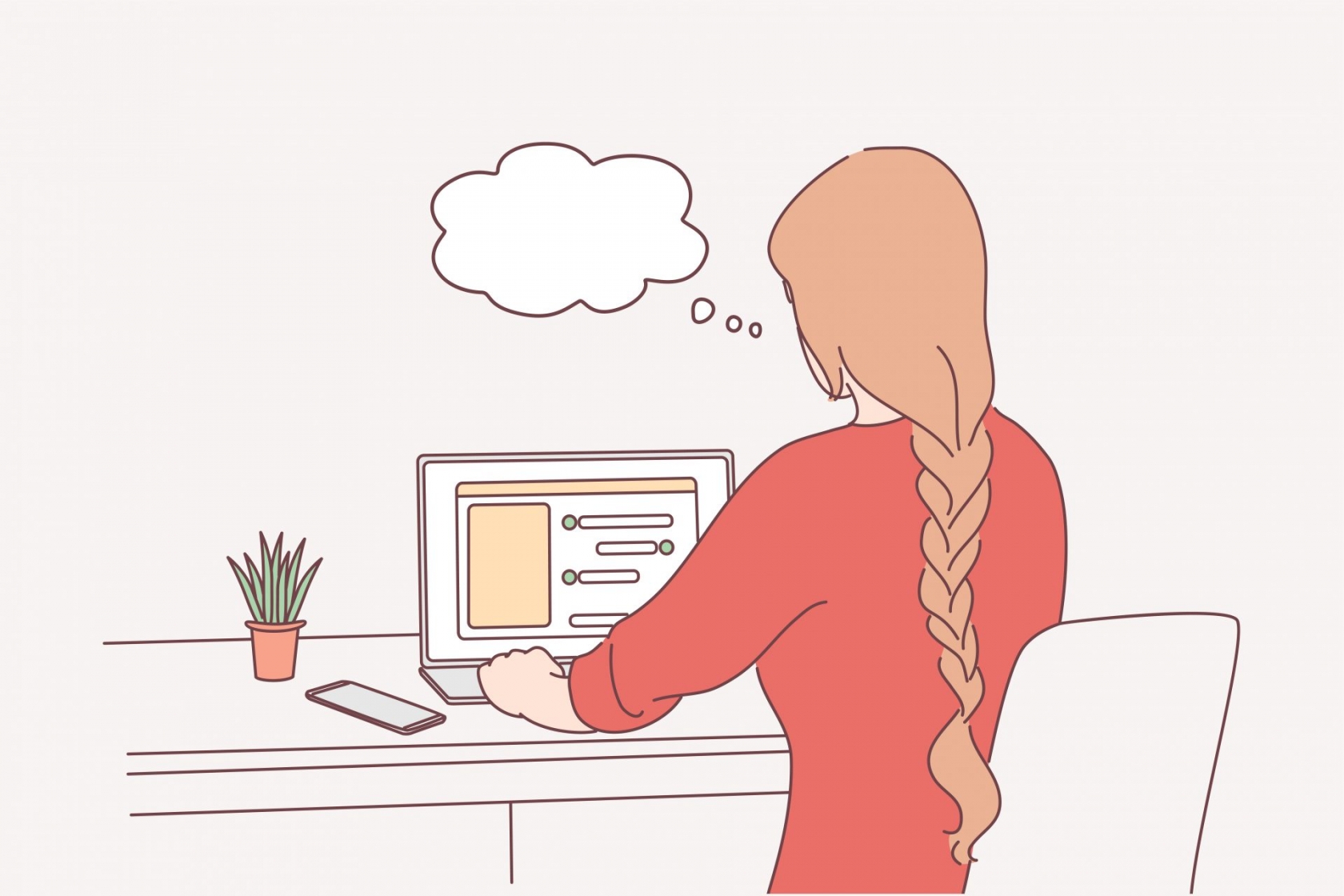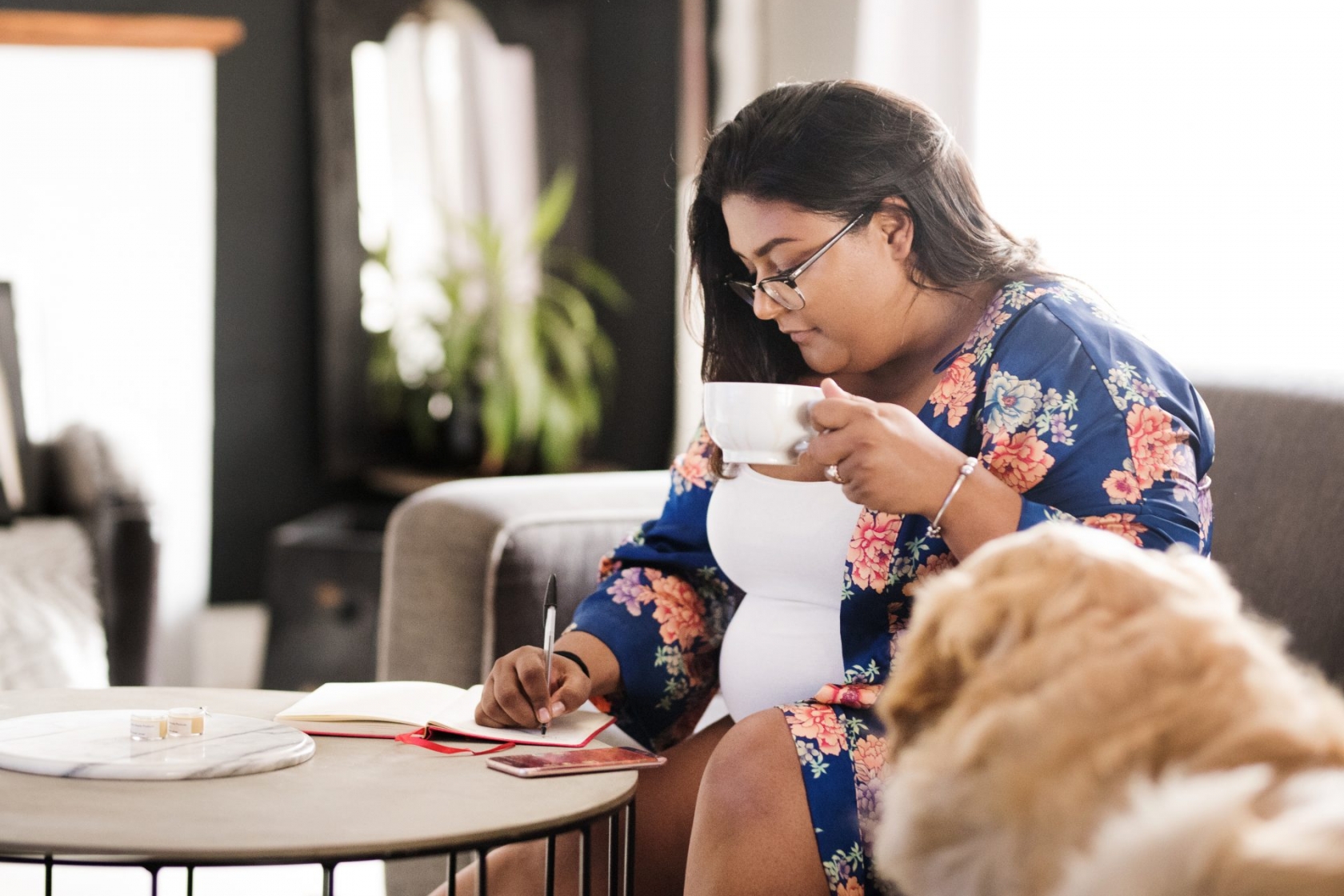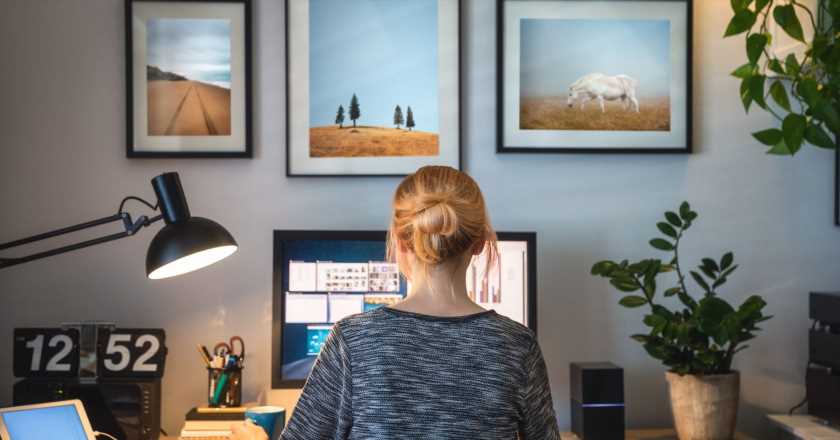How to make your first week back at work after Christmas a lot less stressful
For many people, returning to work after the Christmas break can be a rather stressful and anxiety-inducing prospect. Here’s how to make the transition a little easier.
If the idea of sitting down at your desk and logging on to Zoom this morning filled you with a sense of dread, you’re definitely not alone.
The bank holiday yesterday may have delayed the inevitable just a little bit longer, but today, people up and down the country will be returning to work for the first time after the Christmas break. And while getting back into the swing of things may be a relief for some, for many people, the idea of returning to the hustle and bustle of the working day (especially while working from home) is pretty damn stressful.
You may also like
The *real* reason you’re feeling anxious about returning to work this week
“Returning to work after Christmas is not necessarily an easy task,” explains Dr Becky Spelman, psychologist at the Private Therapy Clinic. “Often people will have had a nice break, and therefore their motivation and ability to actually be in ‘work mode’ is going to be thrown off.”
According to Spelman, the culmination of feelings of sadness about the break ending, worry about the backlog of emails awaiting us and fears of returning to our working from home set-up may all be contributing to this feeling of anxiety.
Indeed, while in normal years it’s not uncommon for people to experience anxiety and stress during the first week back to work after Christmas (or any holiday, for that matter), the added pressure of working from home – which remains necessary as a result of the Omicron variant – has the potential to amplify those feelings.

Spelman explains: “Working from home can be an amazing thing for people, but it can also be incredibly difficult depending on a person’s set-up or their preferences. While some people might focus on not having to commute or being able to focus better at home, others might have a more hectic environment where they can’t concentrate at all.
“For some, the very ritual of going to work makes it easier for them to concentrate in that space.”
With this in mind, you may find it trickier than usual to transition back into ‘work mode’ after the Christmas break, simply because there’s no ‘physical’ shift back into an office environment. After all, that’s part of the reason why any return to work after a holiday can be stressful and anxiety-inducing – when we break away from a habit or routine, it can take some time to get ourselves back into it.
The question, then, is this: what can we do to make that transition as stress-free as possible?
If you’re yet to return to work, Spelman recommends spending the time you have left to get organised – not only because it will alleviate some of the stress of the back-to-work rush, but because it’ll help to ease you back into your working habits.
“A good way to start any return to work is by getting organised,” she explains. “Before you even start your working day, either the night before or early in the morning, prepare everything that you need and set things up as well as possible so that you’re ready to go.”

On top of getting organised, Spelman suggests focusing on achieving a balance – instead of throwing yourself back into work and getting buried by your to-do lists, try to make time for some of the things you’ve enjoyed during the break. By making a work/life balance a priority, it’s likely that the transition back into ‘work mode’ will be a lot less stressful, and perhaps even enjoyable.
“Ensuring balance is important,” Spelman says, “so it’s not just all about achievement and work. It’s good to remind yourself that success can also be about interpersonal success and success in your fitness, not just financial success or career success.”
To ensure this balance, try to think of the return to work in terms of both your working and personal hours, and what you can do to take care of yourself throughout the day.
“Really looking after your body and mind is the key to making sure that everything will be manageable for you,” Spelman explains. “Make sure that you take time for your body by doing lots of stretching, doing some exercise – even if it’s a very gentle exercise – and meditating.”
She continues: “If you really look after your body and mind outside of work, then you’re going to feel a lot better during your working hours – you’re going to feel a lot less stressed and anxious about any tasks that challenge you.”
Although meditation may sound daunting for many people, Spelman stresses the importance of finding a type that works for you – whether that’s guided meditation via an app or video, or simply taking some time to notice your breath. Simply making time for it – and sticking to those times – is a great place to start.
You may also like
Meditation: Try working on your breathwork if you are struggling to meditate
So whether you’re feeling a lot of stress and anxiety about returning to work or simply want to make the transition period a little easier, it’s clear that the most important thing we can all do is prioritise balance.
It’s all too easy to dive headfirst back into the working year, but with a few simple adjustments, we can ensure that the way we approach our working lives in 2022 works for us, too.
If working during the pandemic is taking its toll on your mental health, you’re not alone. From the isolation of being separated from colleagues and the stress of relying on technology to the threat of redundancy and the anxiety of applying for a new job, there are a number of reasons why you might find this time particularly challenging.
So, what can we do about it? We’ve got a plan.
Stylist’s Work It Out campaign, supported by Mind, aims to give you the tools and resources you need to take care of your mental health while you’re stuck at home. From completing your Work 5 A Day to dealing with issues including anxiety, loneliness and stress, we’ll be exploring all aspects of wellbeing during this strange time.
For more information, including how to complete your Work 5 A Day, you can check out our guide to getting started.
Images: Getty
Source: Read Full Article
